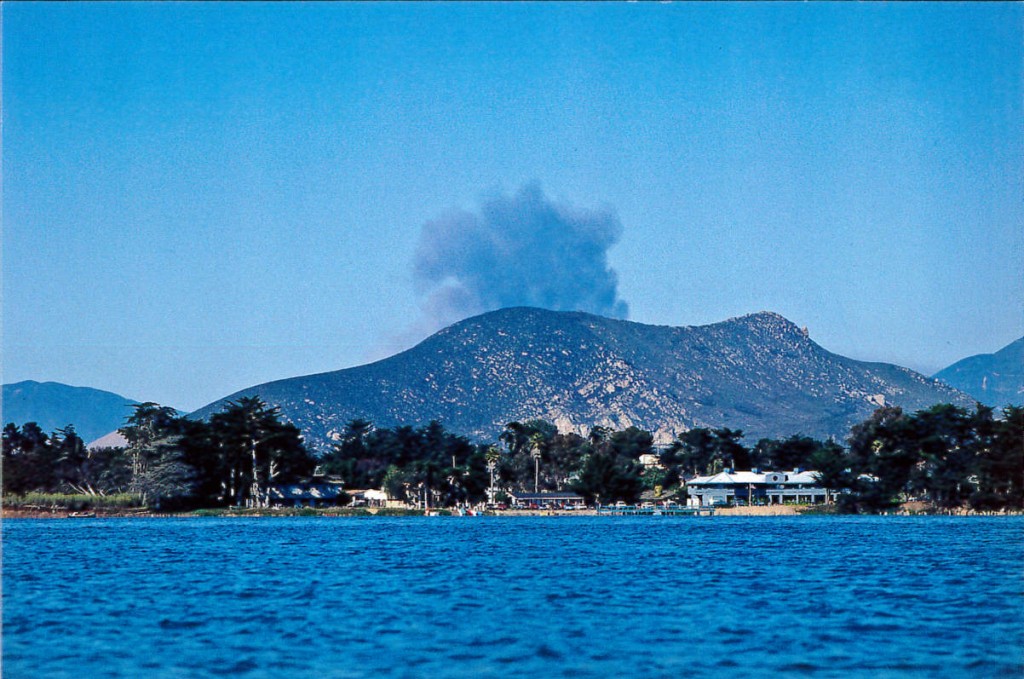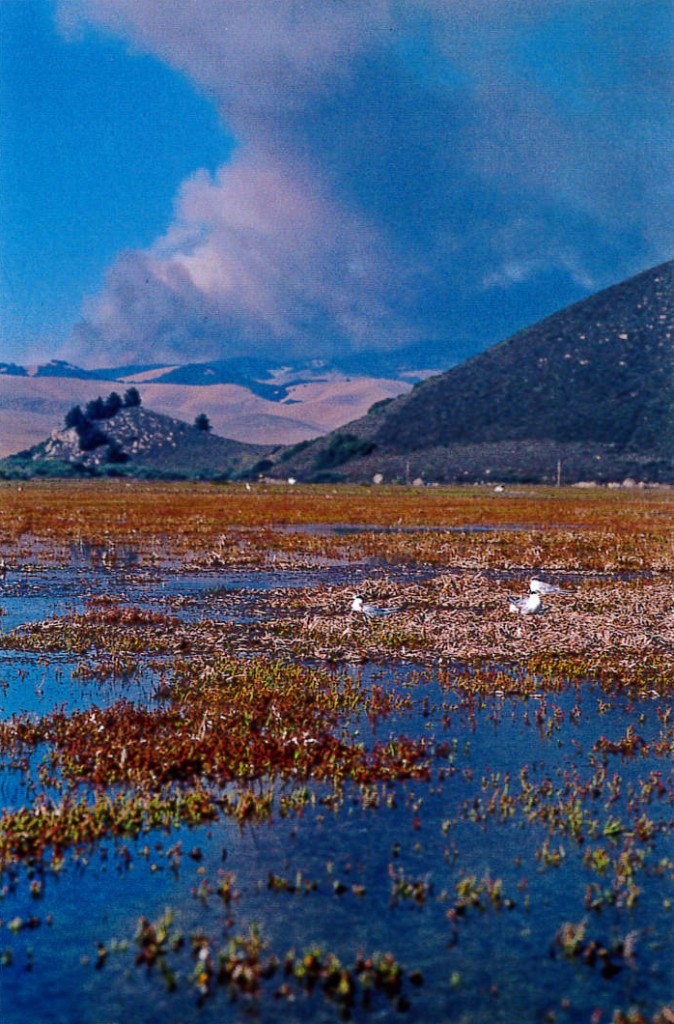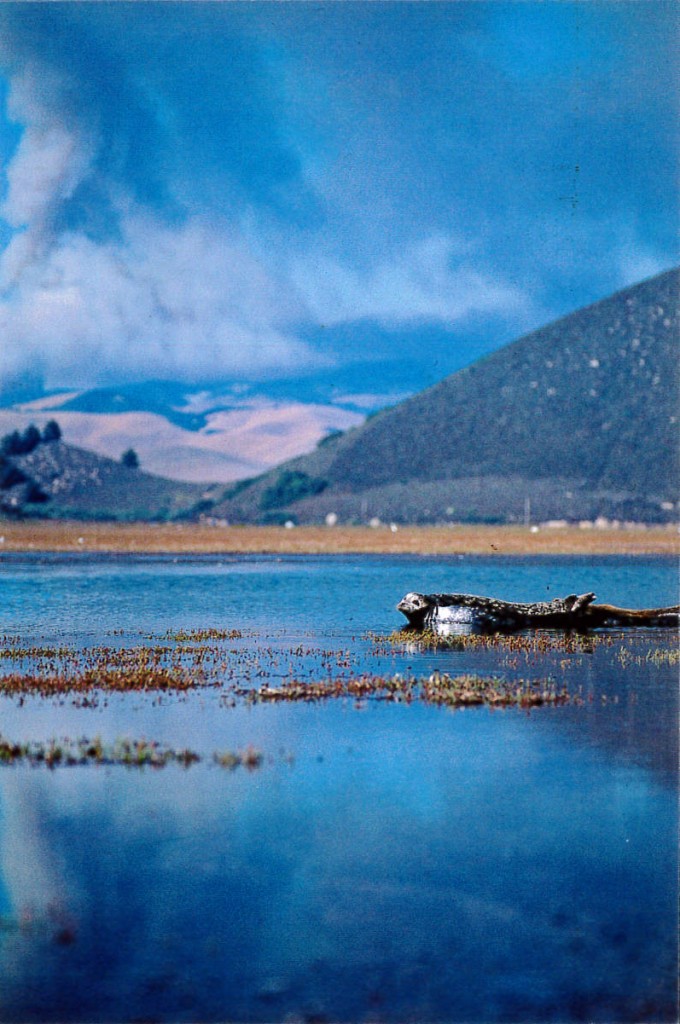This week’s fire on the Cuesta Grade comes almost exactly 21 years after the devastating Highway 41 fire of August 1994. Ruth Ann Angus, local photographer, writer, and long-time supporter of the Estuary Program, was out kayaking on the bay with a friend when the Highway 41 blaze began.

As Ruth Ann recalls, “We paddled all the way back to Sweet Springs and as we turned around there, I spotted the puff of smoke in the sky. I knew it was bad so we immediately began paddling back to the Marina area….” She took photos on the way back to shore. As they paddled, the plume of smoke grew.

In the end, the Highway 41 fire destroyed 42 houses and burned 50,000 acres of land. The aftermath of the fire was damaging for the estuary as well. It reduced the amount of vegetation in the watershed, which led to less stable soils, which meant an increase in the amount of silt that washed down into the estuary during that spring’s heavy rains. (According to an article by John Lindsey in The Tribune, Cal Poly reported 8 inches of rainfall on March 9, alone.)
Increased sedimentation is a big problem. It causes the estuary to fill in at an unnaturally fast rate, which causes habitat to change too quickly for local flora and fauna to adapt. It can also decrease the bay water’s transparency, making it harder for aquatic plants like eelgrass to get the sunlight they need to thrive. Monitoring of eelgrass beds revealed a serious decline in acreage after the spring storms of 1995.

Luckily, the current fire burning on the Cuesta Grade is much smaller than the Highway 41 fire was 21 years ago. It also falls outside of the Morro Bay watershed. However, with a strong El Nino forecast for this year, its aftereffects will be likely be felt in local waterways this winter and spring.